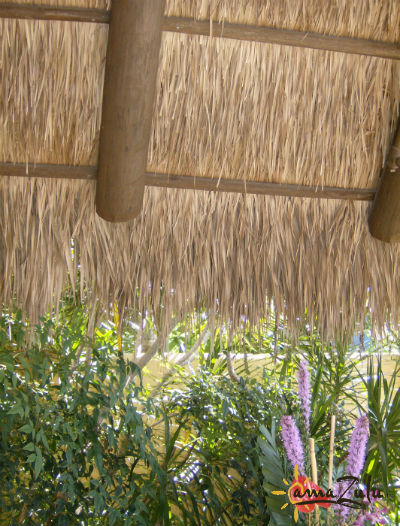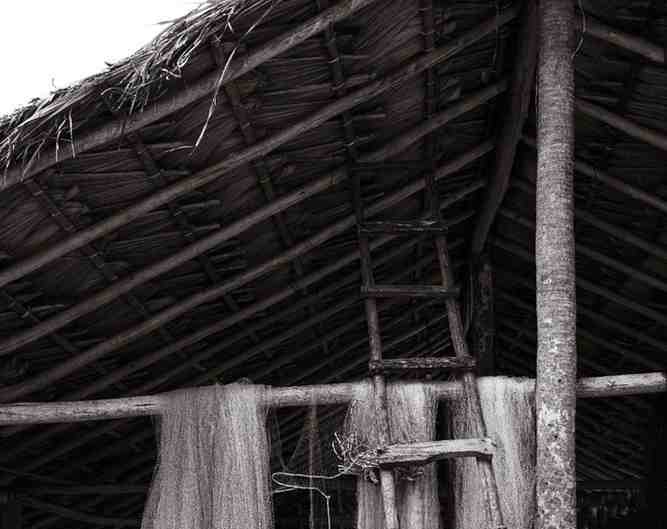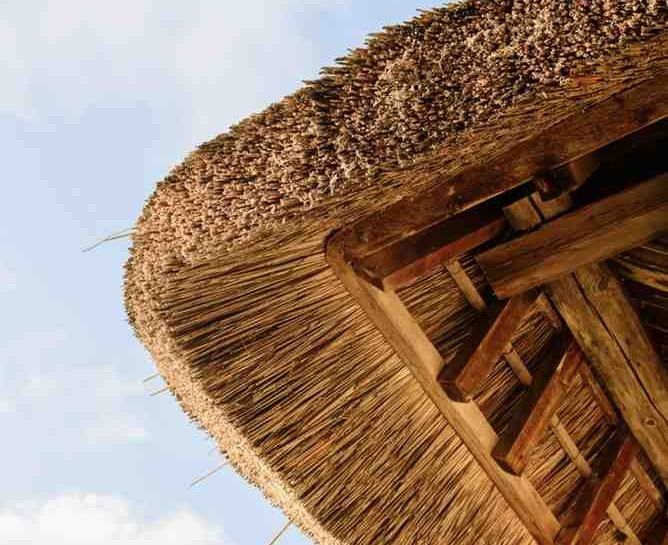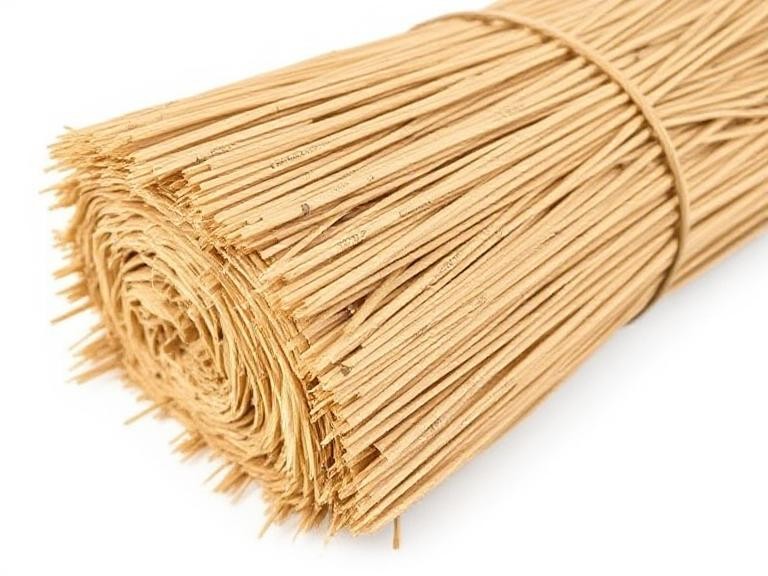Even though thatch is a beautiful and unique material for both residential and commercial roofs, sometimes it gets a bit of a bad rap. Well, at amaZulu, we love thatch and don’t want to see its name squandered all over the internet, so we decided to clear up some of those harsh myths floating around out there. Here are our top FAQs about thatch. As you can see, most of these are common misconceptions. We hope this article helps you understand why thatch is actually a great building material (even in modern times!)
Top FAQs About Thatch Roofing:
FAQ #1: Why would I build my roof with the annoying grass buildup that keeps my garden from growing?
There are actually two different kinds of “thatch” out there. Thatch can either refer to the layer of built up stems, leaves, and roots that accumulates between the layer of actively growing grass and the soil underneath OR, the thatch we’re talking about: a building material made out of dried vegetation such as straw, water reed, rush, or heather. While the layered “thatch” is a nuisance to most gardeners out there, the thatch used in construction is actually an extremely durable and strong material.
FAQ #2: Roofs are just made out of a bunch of piled up grass.
Not exactly. While thatch roofs are made from dried up materials such as straw, stems, and reed, they are so much more than just “piled up!” They are woven together extremely tightly to form a nearly impenetrable surface that keeps out natural elements, rodents, and pests. At amaZulu, we carry easy-to-install natural thatch and synthetic thatch panels that are piled densely enough to deter rainwater and detract birds and insects from getting too comfy. So there are a few ways to create that beautiful and unique roof — but all of them are long lasting and durable!
 FAQ #3: If you have a thatch roof, your entire house is going to go up in flames.
FAQ #3: If you have a thatch roof, your entire house is going to go up in flames.
If you have a house at all, and it is somehow set on fire, we’re not going to lie, it might go up in flames. But that’s a possibility for any house built with any material! The misconception here is that thatch is more flammable than traditional roofing materials and therefore, you might be more likely to have an issue. Any material will catch fire if a flame is present, thatch is just more susceptible to burning faster or smoldering. But all of this can be avoided by applying a fire retardant, which can be applied to some natural thatches and all of amaZulu’s synthetic thatches.
FAQ #4: Your thatch roof will be a vacation getaway for rodents, birds, insects, and any kind of pest you can possibly think of.
You may have heard the old saying, “It’s raining cats and dogs!” This colloquialism actually came from the myth that thatch roofs are the perfect home for all kinds of animals, even pets! In the olden days, people believed that rats, mice, and even their own dogs would climb up into the thatch roof covering and make shelter there, only to come falling to the ground when the thatch became slippery due to rainwater. Well, there are actually two misconceptions here!
- One of the strengths of thatch roofing is that it’s made to keep out rainwater and
- Your dogs won’t get into your thatch roof, that’s just crazy.
With natural thatched roofing, you might find some pest infestations if you don’t take care of it properly, but without proper care (such as touching up repairs and applying mesh netting), anything is susceptible to some kind of damage. If you want to avoid this altogether, synthetic thatch or an artificial thatch roofing material is a great alternative that actively detracts all kinds of pests but looks nearly identical!
FAQ #5: Your thatch roof cover will leak, fall apart, blow away, and disintegrate if any kind of harsh weather strikes.
Of all the FAQs about thatch, this is our favorite. IT IS ABSOLUTELY NOT TRUE! Thatched roofs are the oldest roofing technique in the world. See the history of thatch roofing. How did a thatch roof withstand the test of time? Certainly, not by being a horrible roofing technique. Thatch roofs are known for being great at keeping water out of your home or building. Thatch roofing materials are naturally waterproof so they won’t become waterlogged and seep into your interior, and they’re piled on top of each other so that it becomes impenetrable to rain and other elements. Thatch roofs will also stand up to heavy winds. During installation, the thatch is fixed directly to the rafters, making the roof part of the permanent structure. As an added bonus, they serve as natural insulators, keeping your home or building cool in the summers, and warm in the winters! Think of how much you will save on energy bills.
Overall, thatch is a great building material that is sure to add a unique look to any home or business. It keeps out rainwater, can stand up to heavy winds, can last up to 60 years with proper care and maintenance, and give your building a timeless look that turns heads.
We hope you’ve enjoyed these FAQs about thatch. As you can tell, some of these are myths and some are just outright incorrect information.
Additional Reading – Other FAQs about Thatch:
- Natural thatch – It’s the natural choice
- Versatile Thatch Roofing – What You Need to Know
- Synthetic Thatch or Natural Thatch?
- The Ultimate Guide to Artificial Thatch Roofing
If you are thinking about incorporating it into your latest project, give us a call at 877-243-5309 or contact us today! At amaZulu, our passion comes together with your vision to create true innovation!





